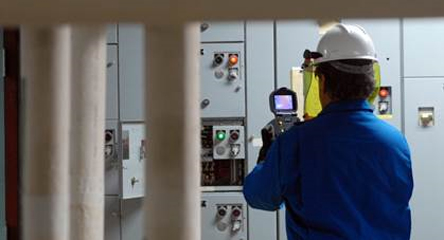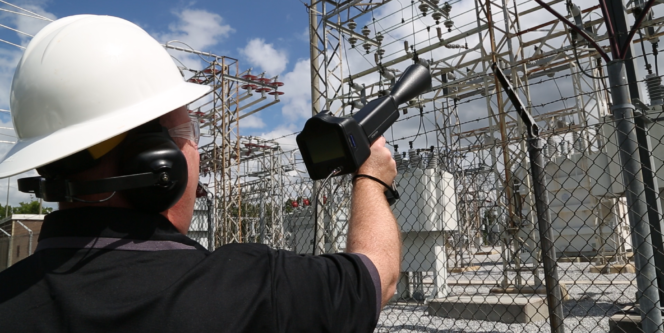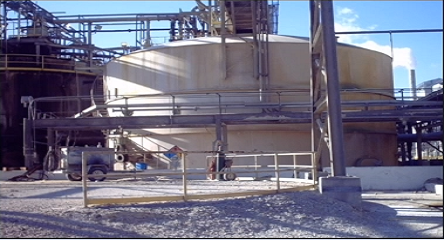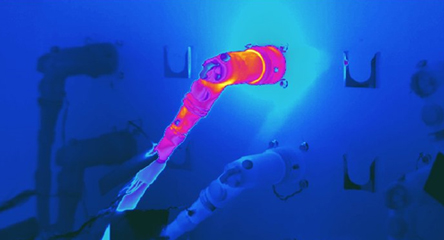Do environmental conditions affect infrared test results? The answer is yes, they do affect the test results.
I’ll explain: Thermal imaging cameras and spot radiometers detect the thermal radiation coming from a surface. What you measure is a combination of reflection of other heat sources, the transmission of heat through the object you’re testing, and emission from the surface of the item. And what is emitted is related to absorption. So for example, if the sun is shining on the object, we can get the reflection of the sun, but also the sun could heat up the surface. It absorbs the heat, and then it’s emitted, and that’s what we measure.
Here’s my heat source (shown in video); it is beating down. Some of it is potentially transmitted through the item that I’m testing. Some of it is absorbed into the item, and then there’s reflection that comes off, and there’s also emission of heat from that item. So, if we have our camera in a particular position, I am looking at the heat emitted, the infrared radiation from that surface. Some of that will potentially be transmission from a heat source on the other side—but for most of what we test, it’s not going to be transmission, so we’ll just focus on reflection and emission.
We have to be careful about what we’re testing, and how much of it is just pure emission versus reflection, but we also have to consider, when we are taking that measurement, even if we were able to just measure the emission and no reflection, how much of what we’re measuring is due to the operation of the item under test: whether there’s a short circuit, or friction, or something like that, versus how much heat is being absorbed into the item, and that’s what we’re measuring.
The fact is, wind on an item is probably going to cause it to cool down: if it’s a cooler wind, it’s going to take heat away, and if it’s a hotter wind, it may heat it up. That heats up the object, and then we get the infrared radiation emitted from that surface, and we measure it, and we think it’s hot. No, it’s hot because of the sun, and not because of a fault condition.
Measurement could be affected by the sun or another heat source of any type—it could be something that’s meant to be hot in what you’re testing or not, but it’s reflecting off the item—so we’ll perceive that the item is hot when it’s really just reflection.
Humidity also affects the results in different ways, and the angle to the surface of the item will reflect the results. We have to choose the right conditions under which we test any item that we plan to routinely test, and we should always test it under those same conditions. If the sun’s going to be an issue, don’t test it during the day, or, if you can, shield it, but remember that if the sun’s been beating on that surface, it will already be hot. Test it always at the same time of day, but remember that, during the year, the sunrise and sunset times change. Consider the wind as well, and the effect of humidity, but certainly make sure you always test the item from the same position—don’t just walk up and test it one time from the left and one time from the right—even though you may be aiming the camera to the same place, it does change the results.
Looking at the infrared measurement taken on this screen, if I focus on the wind going over it, it cools down. If the sun is shining on it, it may heat up the item, or it may reflect—in this case, I am showing reflection, not heating up.






